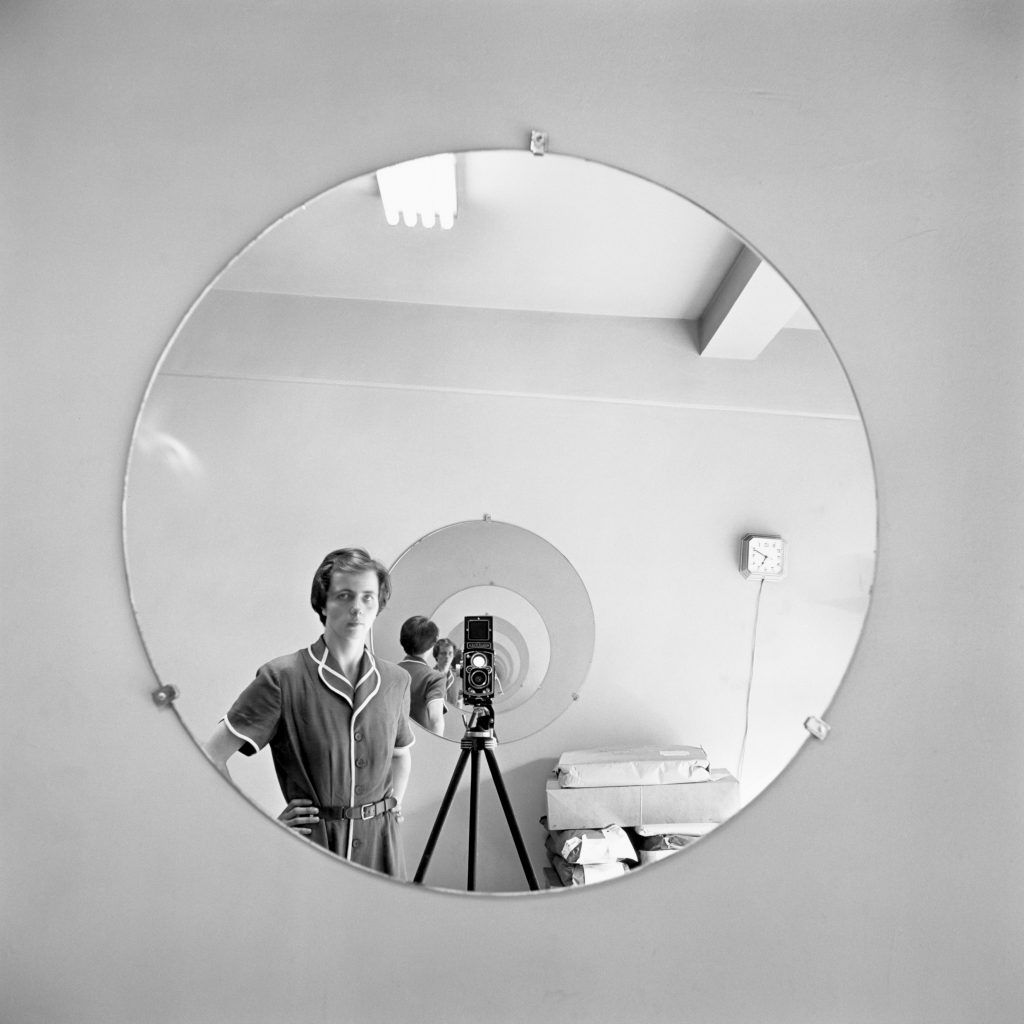Turner and Constable: Rivals and Originals at Tate
Two of Britain’s most famous Romantic painters meet again in Tate Britain’s new exhibition. Turner & Constable: Rivals and Originals...
Sandra Juszczyk 8 December 2025
Unknown in her lifetime, Vivian Maier is now recognized as one of the greatest American photographers, among those including Robert Frank and Diane Arbus. Her vast body of work is multifaceted but let’s focus on a specific part of her ouvre: the self-portrait. This article was inspired by 2022 Vivian Maier exhibition at Bozar in Brussels, Belgium.
Vivian Maier remained unknown until she passed away. She spent over 40 years working as a nanny, first in New York and later in Chicago. Passionate about photography, she kept constantly capturing snaphsots of her daily life. This self-taught artist has meticulously archived the world around her. It seems that she was totally dedicated to this task. Indeed, she collected an impressive photographic corpus: 120 000 negatives, films in super 8 and 16 mm, various audio recordings, a few photographs, and hundreds of undeveloped rolls of film. At this point, it’s definitely more than a hobby.

Vivian Maier, Self-Portrait, New York, May 5, 1956. © Estate of Vivian Maier, Courtesy of Maloof Collection and Howard Greenberg Gallery, New York, NY, USA.
Around 2000, she put her extensive collection in storage. A few years later, the entire collection was seized as payment for unpaid rent. At the same time, John Maloof, a real estate agent, was looking for photographs to illustrate a local history book. At an auction, he bought the Vivian Maier lot without knowing her. Soon he realized that he had found a gold mine.
It was a great starting point of a great adventure: he began to reconstruct her life. He sorted, classified, and digitized the photographic work he discovered and also met her relatives. In 2011, he organized her first exhibition at the Chicago Cultural Center, Finding Vivian Maier. It was an immediate success. Maier’s work immediately found her audience, as evidence. After that, John Maloof co-produced a documentary, also called Finding Vivian Maier, where he related the conditions of his discovery and interviewed many people who knew the photographer. That was a success as well. Consequently, these events led effectively to worldwide Vivian-Maier-mania.

Vivian Maier, Self-Portrait, New York, 1953. © Estate of Vivian Maier, Courtesy of Maloof Collection and Howard Greenberg Gallery, New York, NY, USA.
The whole work of Vivian Maier is crossed by recurring themes, including street scenes, portraits of people, as well as the world of children. But Bozar has decided to approach it from a specific angle: the self-portrait. These abound in Vivian Maier’s work and were definitely a playground for her. Self-portraits are great for experimenting, but it was also a way to express her identity. This is important when you consider her living conditions and social status, which indeed, in a way, reduced her to invisibility. Designing a mass of quality self-portraits as she did can be interpreted as a smart way to affirm her existence with elegance, a sort of discreet resilience, a silent resistance.

Vivian Maier, Self-Portrait, Chicago, 1956. © Estate of Vivian Maier, Courtesy of Maloof Collection and Howard Greenberg Gallery, New York, NY, USA.
Reflection, mirror, and shadow: these are key elements of Vivian Maier’s visual language. From this, she created infinite variations and combinations. She liked to photograph her shadow, to include it in the frame. As an element of the composition that gives a mysterious twist to the daily atmosphere of the image and also echoes the anonymity that characterized her life.
Mirrors are also often present — mirrors or any surface that sends back a reflection. She used them as tools of experimentation, to play with her image and to conceive elaborate compositions where she staged herself as a photographer. The reflection helped her to discover new points of view, not only on herself but also on the environment and the people around her.

Vivian Maier, Self-Portrait, Chicago, 1956. © Estate of Vivian Maier, Courtesy of Maloof Collection and Howard Greenberg Gallery, New York, NY, USA.
Vivian Maier’s work is captivating. Of course, the story that accompanies the discovery of her work is incredible, and it will continue to arouse the curiosity of many people. But even without that, there’s an obvious statement: she was a remarkable photographer. Inspired, she excelled in capturing the moment and composing the frame. One of those people gifted with an extraordinary gaze to sublimate daily life.
DailyArt Magazine needs your support. Every contribution, however big or small, is very valuable for our future. Thanks to it, we will be able to sustain and grow the Magazine. Thank you for your help!